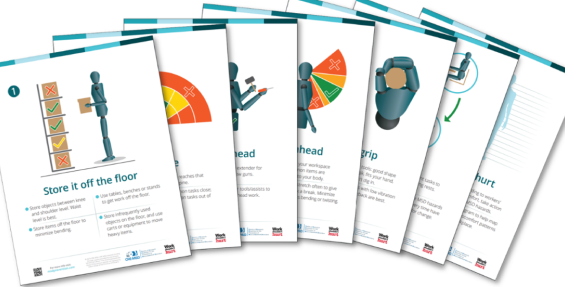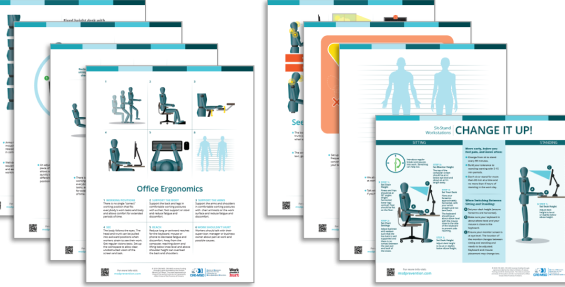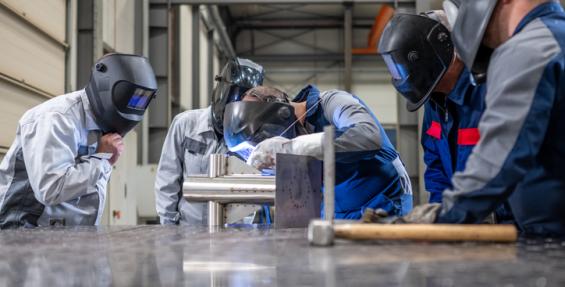
Ergonomic Design Standards
Engineers are heavily involved in creating our built environment, including workplaces. Design decisions impact the human operators in the work system: i.e., workers. Recognizing key risk factors for MSD permits the creation of safer, more productive operations producing higher quality products and services.
The Canadian Standards Association (CSA) has created standards describing how to systematically apply principles of ergonomics in a workplace. The standards will help "enable an organization to enhance worker health, safety, and well-being and optimize system performance to prevent occupational injuries, illnesses, and fatalities and/or reduce the severity of harm related to occupational activities and work environments". Refer to these standards to design ergonomic workplaces.

Opportunities for Ergonomics and MSD Prevention with Six Sigma
As an engineer you have knowledge, experience and information to design and modify workplaces. Commonly, general improvement and problem-solving techniques are used, such as Six Sigma. Companies that use Six Sigma to improve quality, safety and productivity, can also use Six Sigma tools for musculoskeletal disorder (MSD) hazard identification, problem solving, and reduction.

Want to search the resource library?
Find all the available resources on the MSD prevention website, including posters, videos, and links to relevant websites.
MSD Guidelines

Quick Start Guide: General
The guide includes a folder and posters with information on common MSD hazards and solutions to control hazards in many workplaces.

Quick Start Guide: Office
The guide includes a folder and posters that include tips for setting up computer-based workstations and best practices for MSD prevention.

Basic Guideline
The Basic Guideline is best for organizations that have a Joint Health and Safety Committee (JHSC); have a person or persons with knowledge, experience, and responsibility for Health and Safety; have policies and procedures for health and safety addressing most hazards but want to improve their MSD prevention activities.

Comprehensive Guideline
The Comprehensive Guideline is best for large organizations that have a formal management framework; have a management system for Health and Safety; have policies and procedures for health and safety that address most hazards but want to improve their MSD prevention activities.
Assessments
Preliminary Assessments
These tools typically contain a list of questions with either yes/no or multiple-choice style responses to note the presence or absence of an MSD hazard and some of its characteristics.
Detailed Assessments
Detailed assessments include observational evaluations and comprehensive analyses.
Hazard Controls
The hierarchy of controls is a system developed by the National Institute for Occupational Safety and Health (NIOSH) that ranks hazard controls from most effective (elimination) to least effective (personal protective equipment). Learn more about the Hierarchy of Controls.
Elimination
Removes the source of the MSD hazard to eliminate exposure.
Substitution
Replaces with another approach that reduces the risk of MSD.
Engineering
Modifies the design of the physical workplace to remove or block the MSD hazard from the worker by machinery, tools or equipment.
Supplementary Guideline Resources
Step 1
Demonstrate Management Commitment and Leadership
Step 2
Facilitate and Encourage Workers’ Participation
Step 3
Plan Hazard Identification and Risk Assessment
Step 4
Conduct Hazard Identification and Risk Assessments
Step 6
Control Hazards & Implement Changes to Achieve Targets & Goals
Step 7
Provide Education and Training
Step 8
Evaluate Controls, the Program and the Organization’s Performance
Step 9
Document Lessons Learned and Stakeholders’ Feedback
Step 10
Review Processes, Achievements, and Identify Areas for Improvement
Additional Resources
See All Resources for Engineering Professionals
View a curated collection of resources in the resource library.


